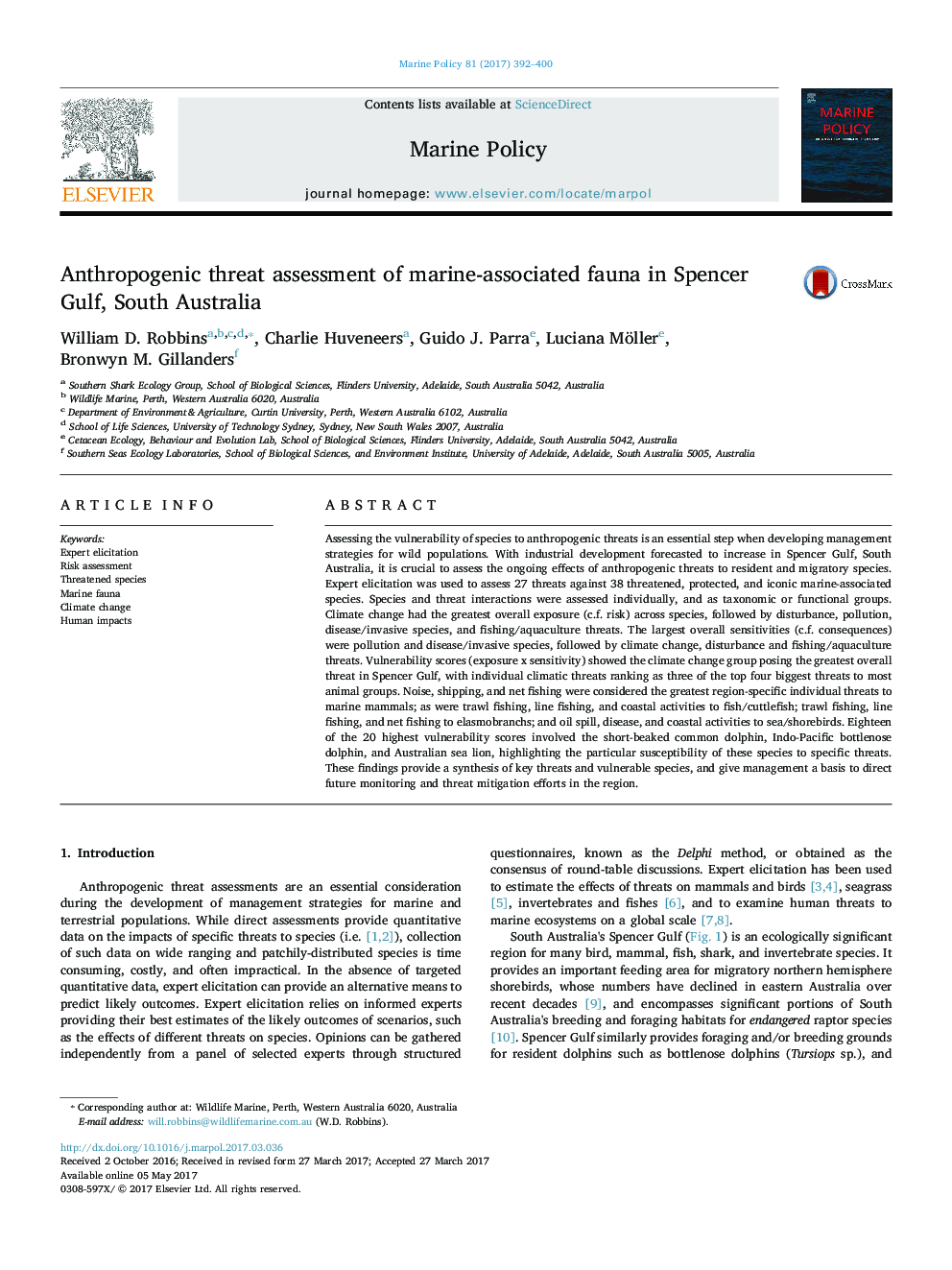| کد مقاله | کد نشریه | سال انتشار | مقاله انگلیسی | نسخه تمام متن |
|---|---|---|---|---|
| 5118051 | 1485498 | 2017 | 9 صفحه PDF | دانلود رایگان |
- Expert elucidation assessed anthropogenic threats to 38 marine-associated species.
- Climate change was deemed the greatest threat across most species.
- Disturbance and pollution threats were the largest regional threats.
- Mammals were the most vulnerable group, with elasmobranchs comparatively data-poor.
- Five species were consistently the most vulnerable across threats.
Assessing the vulnerability of species to anthropogenic threats is an essential step when developing management strategies for wild populations. With industrial development forecasted to increase in Spencer Gulf, South Australia, it is crucial to assess the ongoing effects of anthropogenic threats to resident and migratory species. Expert elicitation was used to assess 27 threats against 38 threatened, protected, and iconic marine-associated species. Species and threat interactions were assessed individually, and as taxonomic or functional groups. Climate change had the greatest overall exposure (c.f. risk) across species, followed by disturbance, pollution, disease/invasive species, and fishing/aquaculture threats. The largest overall sensitivities (c.f. consequences) were pollution and disease/invasive species, followed by climate change, disturbance and fishing/aquaculture threats. Vulnerability scores (exposure x sensitivity) showed the climate change group posing the greatest overall threat in Spencer Gulf, with individual climatic threats ranking as three of the top four biggest threats to most animal groups. Noise, shipping, and net fishing were considered the greatest region-specific individual threats to marine mammals; as were trawl fishing, line fishing, and coastal activities to fish/cuttlefish; trawl fishing, line fishing, and net fishing to elasmobranchs; and oil spill, disease, and coastal activities to sea/shorebirds. Eighteen of the 20 highest vulnerability scores involved the short-beaked common dolphin, Indo-Pacific bottlenose dolphin, and Australian sea lion, highlighting the particular susceptibility of these species to specific threats. These findings provide a synthesis of key threats and vulnerable species, and give management a basis to direct future monitoring and threat mitigation efforts in the region.
Journal: Marine Policy - Volume 81, July 2017, Pages 392-400
